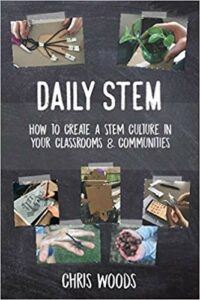Science Technology Engineering and Mathematics (STEM) education is a meta discipline which focuses on the use of tools, technology and applied principles in achieving solutions to problems through innovations. Global societies have increased demand for STEM professionals to drive their economies. It is very important that all teachers, parents and families are part of the STEM revolution in assisting children in honing the 21st
century skills needed to acquire STEM fluency.

Stem.T4L
What are the STEM Skills Children will Need to Succeed in the 21st Century?
The 21st century has seen the expansion and explosion of the Digital Age. The access, use and management of tools and information dictate how humans live, work, play, do business and make decisions. Our children are inhabitants of the digital world and must be literate to function in it and to advance new innovations, skills and knowledge in finding solutions to current and future problems. Training children to acquire the skills needed to function, learn and choose professional careers in society have never been more important.

Robo Wunderkind
Children therefore need the knowledge and skills to take a problem-solving approach to situations in both the natural and designed world based on evidence about STEM related issues. They also need to develop the attitude and exert willingness to engage in STEM. Here are some of the most important skills needed for STEM success:
- Communication-Fluency in communication include the use of a variety of forms, context and content using multiple media and technologies. Users therefore must keep abreast of current, new and emerging communication methods, platforms, devices and media.

Oluwakemi Solaja
- Creativity and Innovation– Fluency in creativity and Innovation include an individual’s ability to use knowledge to create new ways of thinking in order to find solutions to current and future problems as well as to invent tools, products and or services.
- Critical Thinking and Problem Solving– Fluency in critical thinking and problem- solving involve the use of meta- cognition. Individuals are able to apply higher order thinking and reasoning to effectively analyze problems and make decisions about the most effective ways to solve them.
- Collaboration-Individuals of the 21st century must collaborate and know how to work with others in a respectful and effective way to ensure the sharing of ideas, knowledge, skills and solutions to problems. A STEM society involves the formation of highly skilled teams to work on projects and to stream line innovations.

Ismail Salad Hajji Dirir
- Cultural Awareness– This involves the development of cultural competence in collaborating with others. An individual who is culturally aware recognizes and respects individuals’ cultural diversity and social backgrounds.
- Information and data Management– Fluency in information and data management involve an individual’s ability to access data, analyze, synthesize and interpret to form information. Information is then used for sharing, and guide decision-making using multiple sources.

Emily Wade
- Effective Use of Technology– This entails digital literacy which is an individual’s ability to identify, access and use technology efficiently, effectively and ethically in acquiring and sharing information.
- Life Skills– Life skills involve an individual’s ability to become a self-directed, independent learner who is adaptive to change and take responsibility for own success.
How Can School Aid Children?

Kuanish Reymbaev
Teachers are the formal agents in implementing the STEM curriculum. Our teachers must have the knowledge and skills to guide children to achieve STEM fluency. Teachers should integrate 21st century skills into core content using an interdisciplinary approach guided by the principles of STEM design. Here are some sound principles teachers may use for children’s STEM success:
- Use real- world applications – teacher should always seek to connect the content knowledge to real-world applications and children’s authentic experiences. This allows children to see the relevance and use of content. Teachers are encouraged to focus learning and understanding on projects and problem solving. This allows children to learn to collaborate, share ideas, knowledge and to think critically.

Mana5280
- Use technology -Allow children to use technological collaboratively and independently. Collaborative learning environments, both within and outside the classroom, use high levels of visualization and the use of visuals to support understanding. Allow children to become creators and consumes of technology.

Jerry Wang
- Promote inquiry- Teachers should use the question and answer approach. This will allow children to investigate outcomes so that they may develop understanding. Schools should also facilitate the opportunity for teachers to expand their knowledge of STEM by connecting teachers with STEM educators and stakeholders to increase teachers understanding through injury as well.
What Can I do To Help My Child?

National Cancer Institute
Parents are children’s first teachers. Children share most of their authentic experiences with parents and families. From a very young age parents should use every moment as a teaching moment. Talk about what you are doing. Ask why it is done. Question and answer approach is an excellent method in building STEM skills. Let you child do things. Yes this allows the application of learning to be evident. Allow you child to use imagination. Ask how else something could work. Allow you child to build, create own songs, stories and towers. Use technology effectively and efficiently. Take you child to places such as STEM expos, museums, zoos, and parks. Ensure much interaction with the real world inclusive of people, animals, buildings and designs. Choose books and toys that support STEM learning.
Disclosure-This page has affiliate or referral links. As an Amazon Associate, I earn from qualifying purchases. This means I receive a small commission if you decide to click through and buy anything. This is at no extra cost to you but helps me to maintain my website. The information in this post is based on research and professional experience. I am not paid for my opinions, suggestions or recommendations. I take the time to research the resources and make them available to you. I never recommend poor-quality products or create false reviews for sales. You are free to make you own decisions when purchasing. Full Disclosure
Top Recommendations
Here are my top selections for parents, families and teachers on you quest to support children’s STEM success. You can click on the name of you selected resources to purchase on Amazon
1.StoryTime STEM: Folk & Fairy Tales: 10 Favorite Stories With Hands-On Investigations

Amazon
Many favorite folk and fairy tales offer a perfect segue for introducing young children to early STEM concepts. Children explore ways to help the Gingerbread Man cross the river, design sturdy homes for the Three Little Pigs, build a wolf-proof fence for Little Red Riding Hood’s grandmother, and more. Each folk and fairy tale comes with three STEM activities and companion recording sheets. A joyful way to spark a love of science in little learners!
2. Daily STEM: How to Create a STEM Culture in Your Classrooms & Communities

Amazon
Has your school added a STEM class, or are you hoping to build more STEM into you school community? Buying a bunch of 3D printers and robot kits is a good start, but what does a sustainable STEM learning to culture look like? This book will challenge you to think past the Daily STEM acronym and think about what it means to build a culture of STEM thinking in you school. You’ll find plenty of practical tips and examples to make STEM relevant for every kid and infuse it into every classroom and every home in you community.
3. STEM: Engaging Hands-On Challenges Using Everyday Materials, Grade 4 from Teacher Created Resources

Amazon
Spark students’ imagination with this resource full of grade-level appropriate challenges and tasks. With the activities in this book, students will work individually and collaboratively to ask, imagine, plan, create, build, test, and improve. Teachers are given the tools to guide students through the steps of the engineering design process and the scientific inquiry process, helping them to build a clearer understanding of science and engineering practices (SEPS), disciplinary core ideas (DCIs), and crosscutting concepts (CCCs). Each challenge is scaffolded from an engaging Introduction to a student-driven Mini Challenge. Each unit culminates in a Main Challenge in which students put what they have learned to the test.
The 10 challenges included in this book are as follows:
- Send a Message (Information Transfer)
- Collision Contraption (Energy Transfer)
- Solar Heater (Converting Energy)
- Wave Models (Waves)
- Two Types of Bridges (Bridges)
- Testing Telephone Components (Sound Through Solids)
- Earthquake-Proof Structures (Engineering Solutions to Natural Hazards)
- Save the Pond (Weathering, Erosion, and Deposition)
- Big Beaks (Animal Structures)
- Sense Games (Organism Structures)
Academic vocabulary, time frames, and formative assessments specific to each challenge are provided and most materials needed are found in the classroom or recycling bin. A list of Next Generation Science Standards met by these challenges is provided. This resource is 112 pages in all.
Take-A-Ways
This post was written to support parent, families and teachers in honing children’s 21st
century STEM skills for them to succeed. Our children are inhabitants of this digital world and should be literate to function in it and to advance new innovations, skills and knowledge in finding solutions to current and future problems. Therefore, children must be a part of the STEM vision having parents, families and teachers fully engaged and knowledgeable in guiding their future success.
It is my sincere desire that this post was relevant and assisted you to support you child. Please feel free to leave you opinions, ideas, comments, and questions relating to this post. I am more than happy to respond to you in a timely manner.
You are free to share or like this page on any of the above social network. Click on them (Twitter, Facebook, Pinterest) on the top right of the page.
I welcome you sharing you children’s experiences using the suggested resources. Thank you for stopping by and have fun engaging you children!
Tracy-Ann Morgan-Smith, PhD, JP

